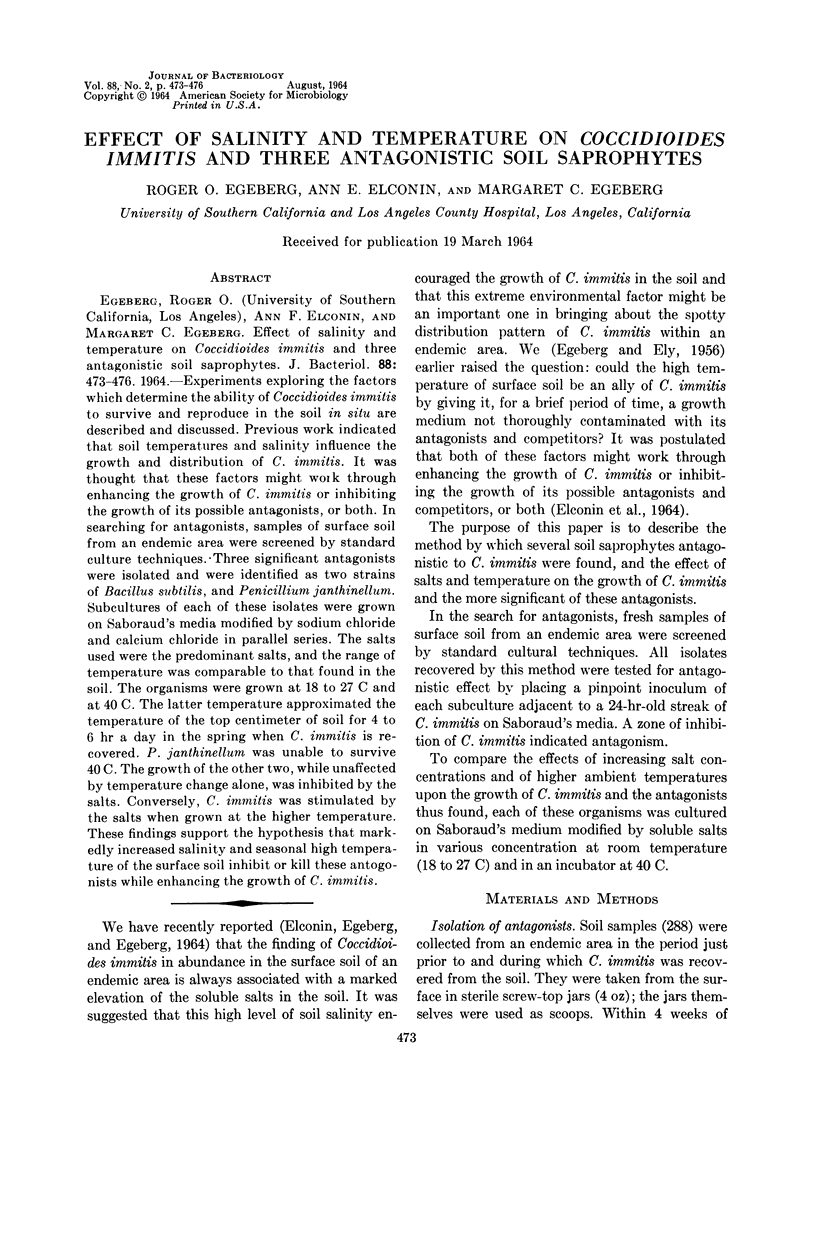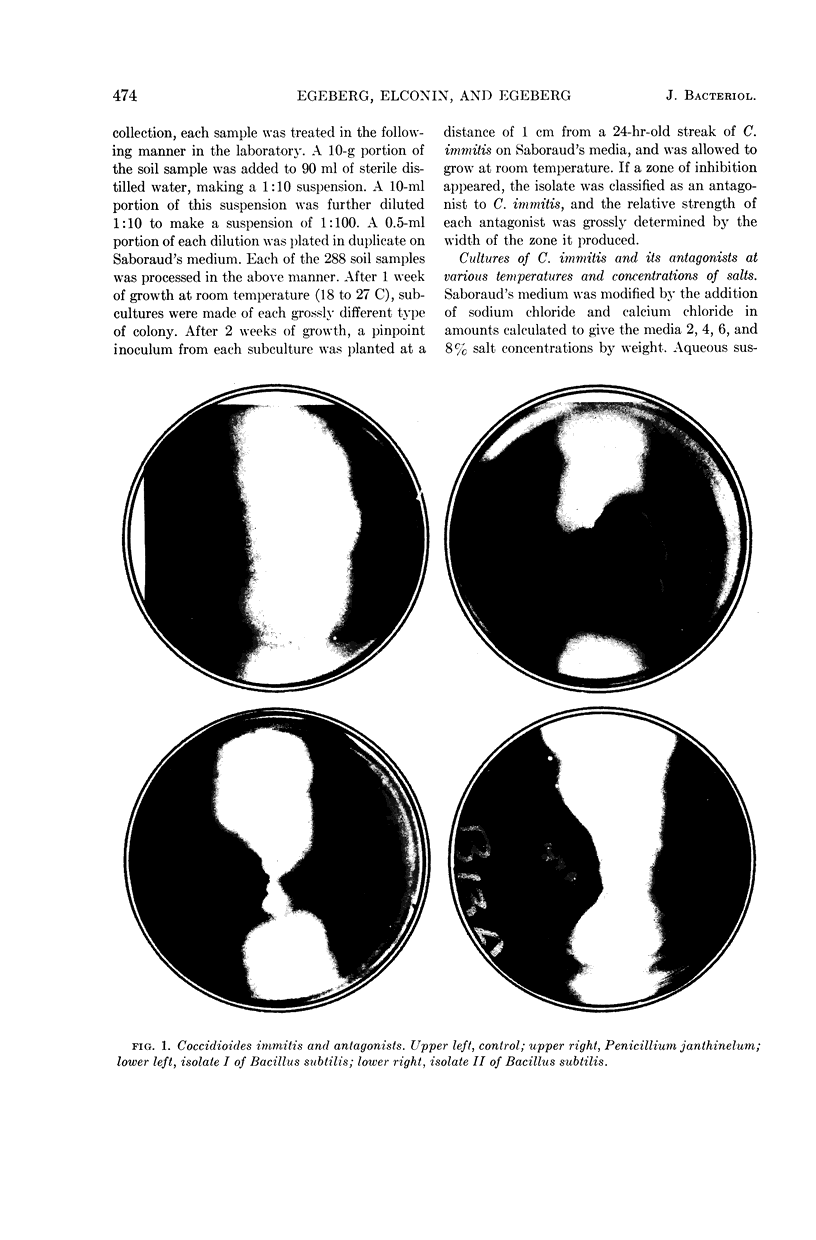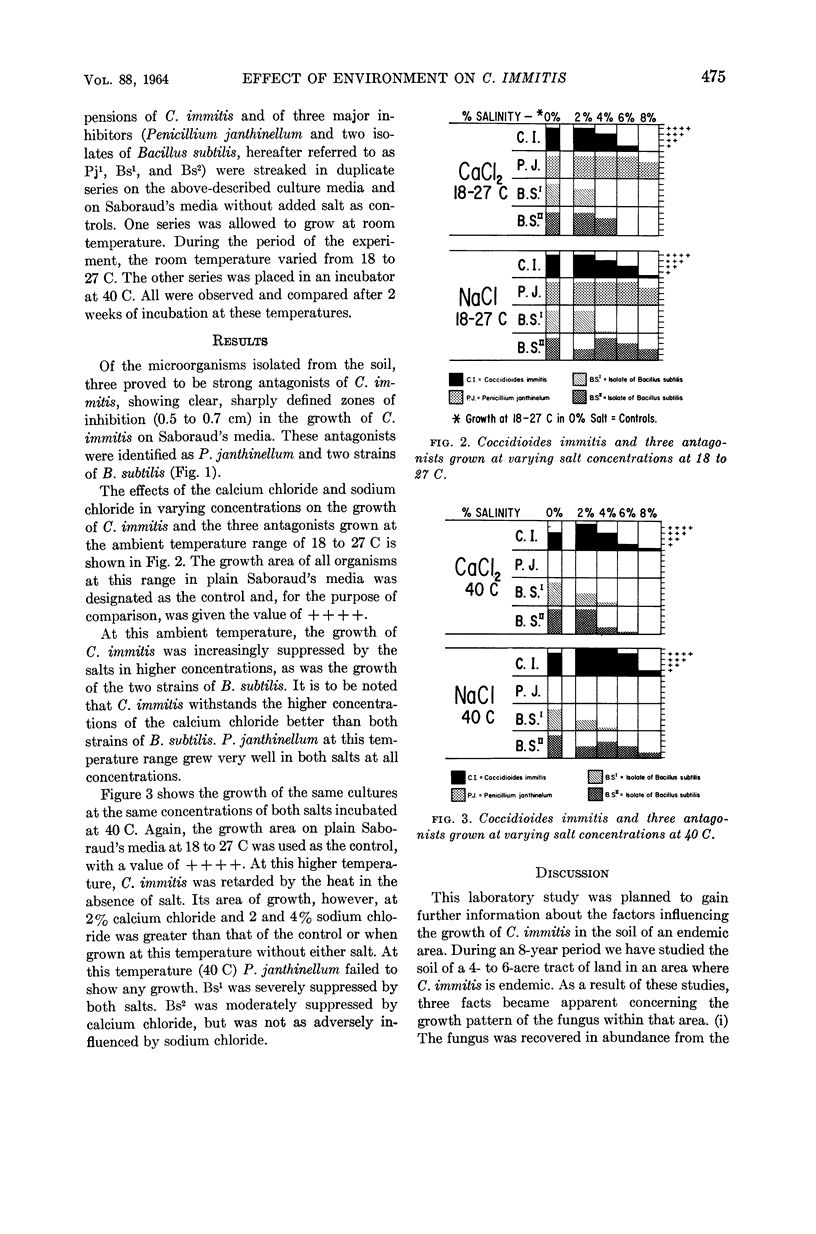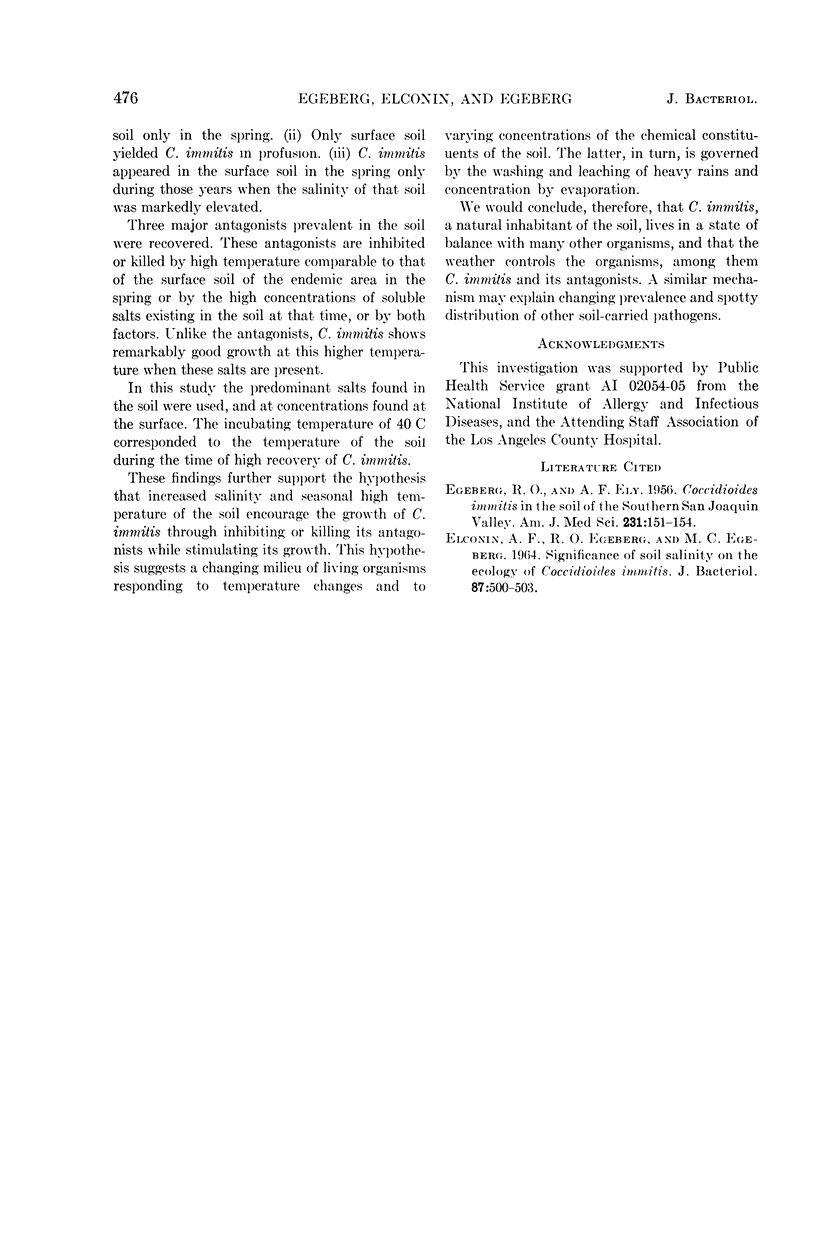Abstract
Egeberg, Roger O. (University of Southern California, Los Angeles), Ann F. Elconin, and Margaret C. Egeberg. Effect of salinity and temperature on Coccidioides immitis and three antagonistic soil saprophytes. J. Bacteriol. 88:473–476. 1964.—Experiments exploring the factors which determine the ability of Coccidioides immitis to survive and reproduce in the soil in situ are described and discussed. Previous work indicated that soil temperatures and salinity influence the growth and distribution of C. immitis. It was thought that these factors might work through enhancing the growth of C. immitis or inhibiting the growth of its possible antagonists, or both. In searching for antagonists, samples of surface soil from an endemic area were screened by standard culture techniques. Three significant antagonists were isolated and were identified as two strains of Bacillus subtilis, and Penicillium janthinellum. Subcultures of each of these isolates were grown on Saboraud's media modified by sodium chloride and calcium chloride in parallel series. The salts used were the predominant salts, and the range of temperature was comparable to that found in the soil. The organisms were grown at 18 to 27 C and at 40 C. The latter temperature approximated the temperature of the top centimeter of soil for 4 to 6 hr a day in the spring when C. immitis is recovered. P. janthinellum was unable to survive 40 C. The growth of the other two, while unaffected by temperature change alone, was inhibited by the salts. Conversely, C. immitis was stimulated by the salts when grown at the higher temperature. These findings support the hypothesis that markedly increased salinity and seasonal high temperature of the surface soil inhibit or kill these antogonists while enhancing the growth of C. immitis.
Full text
PDF



Images in this article
Selected References
These references are in PubMed. This may not be the complete list of references from this article.
- EGEBERG R. O., ELY A. F. Coccidioides immitis in the soil of the southern San Joaquin Valley. Am J Med Sci. 1956 Feb;231(2):151–154. [PubMed] [Google Scholar]
- ELCONIN A. F., EGEBERG R. O., EGEBERG M. C. SIGNIFICANCE OF SOIL SALINITY ON THE ECOLOGY OF COCCIDIOIDES IMMITIS. J Bacteriol. 1964 Mar;87:500–503. doi: 10.1128/jb.87.3.500-503.1964. [DOI] [PMC free article] [PubMed] [Google Scholar]



